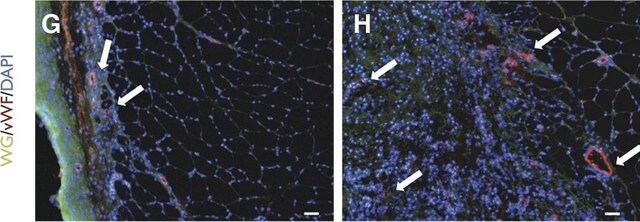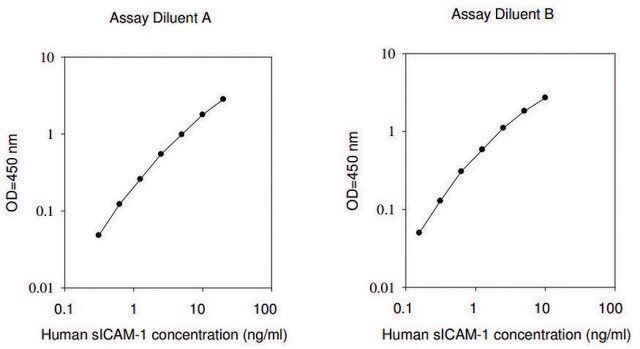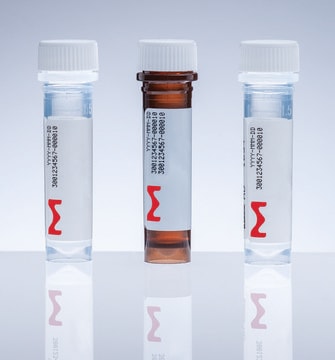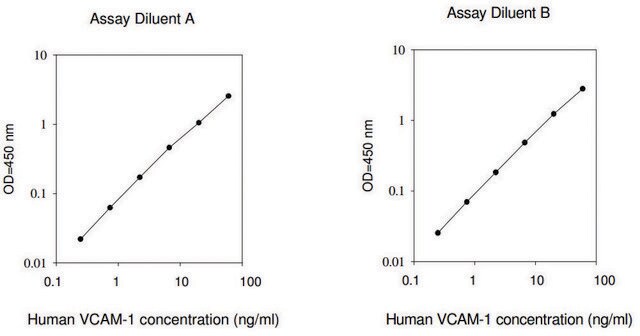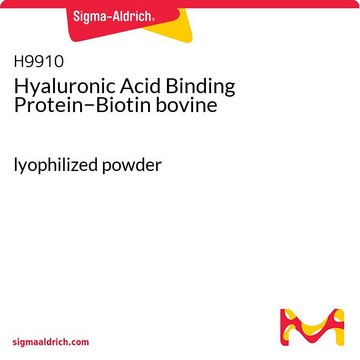RAB0556
Human VWF / von Willebrand Factor ELISA Kit
for serum, plasma, cell culture supernatants and urine
Synonym(s):
VWF ELISA Kit
Sign Into View Organizational & Contract Pricing
All Photos(1)
About This Item
UNSPSC Code:
41116158
NACRES:
NA.32
Recommended Products
species reactivity
human
packaging
kit of 96 wells (12 strips x 8 wells)
technique(s)
ELISA: suitable
input
sample type serum
sample type plasma
sample type cell culture supernatant(s)
sample type urine
assay range
inter-assay cv: <10%
intra-assay cv: <12%
sensitivity: 0.4 ng/mL
detection method
colorimetric
shipped in
wet ice
storage temp.
−20°C
Gene Information
human ... VWF(7450)
General description
Human VWF/von Willebrand factor ELISA (Enzyme-Linked Immunosorbent Assay) kit is an in vitro assay for the quantitative measurement of a target protein in biological samples, such as serum, plasma, cell culture supernatants, urine and cell and tissue lysates.
Application
For research use only. Not for use in diagnostic procedures.
Please refer to the attached General ELISA KIT Procedure (sandwich, competitive & Indirect ELISA)
Please refer to the attached General ELISA KIT Procedure (sandwich, competitive & Indirect ELISA)
Human VWF/von Willebrand factor ELISA kit has been used for the quantification of endothelial marker-von Willebrand factor in bone marrow-derived mesenchymal stem cells (BMSC) and human umbilical vein endothelial cells (HUVEC).
Other Notes
A sample Certificate of Analysis is available for this product.
Please type the word sample in the text box provided for lot number.
Please type the word sample in the text box provided for lot number.
Kit Components Also Available Separately
Product No.
Description
SDS
Signal Word
Warning
Hazard Statements
Precautionary Statements
Hazard Classifications
Met. Corr. 1
Storage Class Code
8A - Combustible corrosive hazardous materials
Flash Point(F)
Not applicable
Flash Point(C)
Not applicable
Choose from one of the most recent versions:
Already Own This Product?
Find documentation for the products that you have recently purchased in the Document Library.
J W R Sins et al.
Journal of thrombosis and haemostasis : JTH, 15(7), 1392-1402 (2017-05-01)
Essentials The role of von Willebrand Factor (VWF) in the pathophysiology of sickle cell disease is unclear. We assessed markers of VWF during admission for vaso-occlusive crisis (VOC) and steady state. VWF reactivity was higher during VOC and was associated
Claus Rieker et al.
Arteriosclerosis, thrombosis, and vascular biology, 39(9), e195-e207 (2019-07-19)
The ApoE (apolipoprotein) allele epsilon 4 is a major genetic risk factor for Alzheimer disease, cardiovascular disorders, and stroke, indicating that it significantly impacts cerebral and vascular systems. However, very little is known about how APOE genotype affects brain endothelial
Erika Kajdácsi et al.
The Journal of allergy and clinical immunology, 133(6), 1686-1691 (2014-02-14)
Hereditary angioedema (HAE) caused by C1-inhibitor (C1-INH) deficiency (HAE-C1-INH) is a potentially life-threatening rare disease caused by the decreased activity of C1-INH. Lack of C1-INH leads to overproduction of bradykinin, a potent vasoactive peptide. Although angioedema is induced by bradykinin
Camila M de Andrade et al.
International journal of biological macromolecules, 134, 653-659 (2019-05-10)
Endothelium plays an important modulatory role due to the synthesis and secretion of molecules that act on hemostasis and fibrinolysis. As there are no literature data about the effect of crotoxin (CTX) - the main component of Crotalus durissus terrificus
Junchao Duan et al.
Nanotoxicology, 12(5), 470-484 (2018-04-17)
Nowadays, nanotechnology environmental health and safety (nanoEHS) is gaining attention. We previously found that silica nanoparticles (SiNPs) could induce vascular endothelial damage. However, the subsequent toxicologic response to SiNPs-induced endothelial damage was still largely unknown. In this study, we explored
Our team of scientists has experience in all areas of research including Life Science, Material Science, Chemical Synthesis, Chromatography, Analytical and many others.
Contact Technical Service

